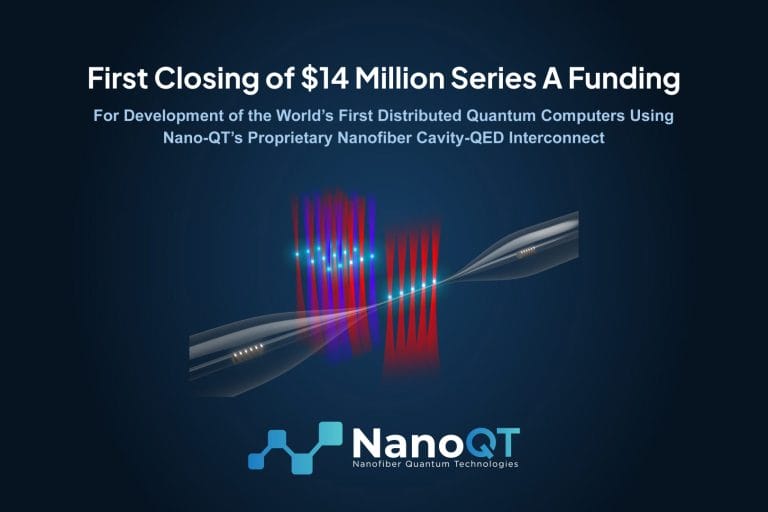Mitsubishi Electric and Nanofiber Quantum Technologies Launch Trial to Develop Quantum Computer Interconnection Technology

Aiming for high-speed, high-capacity interconnection of neutral-atom quantum computers

Optical device for controlling atomic positions using laser beams
Tokyo, Japan, April 24, 2025 – Mitsubishi Electric Corporation and Nanofiber Quantum Technologies, Inc. (NanoQT) announced today the immediate launch of a joint demonstration aimed at establishing interconnection technologies for neutral-atom quantum computers[1].
Neutral-atom quantum computers offer significant advantages in scalability due to their capacity for high integration and through the use of optical tweezers[2] for flexible control of atom arrangement. However, the number of quantum bits (qubits) that can be controlled in a single system is physically limited by constraints such as the space available for atom arrangement. To realize large-scale quantum computing on a practical basis, new technology is needed to interconnect multiple quantum computers and thereby effectively expand the number of qubits.
In this joint demonstration, a photonic quantum interface will be developed by leveraging Mitsubishi Electric’s advanced qubit control technologies and NanoQT’s technology, which combines Yb atoms[3] and nanofiber cavities[4], , aiming to demonstrate technology for high-efficiency interconnection between neutral Yb atom quantum computers. The goal is to create an atom-photon interface that enables highly efficient interconnections between neutral-atom quantum computers. Nanofiber cavities will be used to enhance atom-photon interactions that will significantly increase the efficiency of generating quantum entanglement[5], which is essential for inter-quantum computer communication. In addition, by storing multiple Yb atoms in nanofiber cavities, the project will parallelize entanglement sharing. These achievements, combined with Mitsubishi Electric’s qubit control technologies, are expected to realize high-speed, large-capacity communication between quantum computers.
The interconnection of multiple quantum computers will dramatically increase computing power and potentially revolutionize fields such as drug discovery, the development of innovative functional materials, and aerodynamic simulations critical to aircraft and automobile design. Mitsubishi Electric and NanoQT aim to quickly complete a prototype and establish fundamental technologies required for large-scale quantum computing.

Future Development
The companies will strive to develop a prototype qubit control device in the shortest possible time and will continue to demonstrate optimized quantum-state transfer efficiency aimed at establishing robust control technologies through nanofiber cavities. Ultimately, they aim to build a distributed quantum computing platform capable of addressing real-world industrial challenges.
Media Inquiries
Public Relations Department
Mitsubishi Electric Corporation
prd.gnews@nk,MitsubishiElectric.co.jp
Nanofiber Quantum Technologies, Inc.
https://www.nano-qt.com/contact
Customer Inquiries
Information Technology R&D Center
Mitsubishi Electric Corporation
https://www.MitsubishiElectric.com/ssl/contact/company/rd/form.html
Nanofiber Quantum Technologies, Inc.
https://www.nano-qt.com/contact
[1] A type of quantum computer using neutral atoms (atoms with no electric charge) as qubits, the fundamental units of quantum information. These computers manipulate neutral atoms using laser beams to process quantum information.
[2] A technology that captures and manipulates atoms using laser beams.
[3]Atoms particularly resilient to environmental disturbances, making them one of the leading candidates for qubits in neutral-atom quantum computers.
[4] Cavities using nanofibers stretched thinner than the wavelength of light as waveguides. These devices enhance photon-atom interactions and enable low-loss coupling to conventional optical fiber networks.
[5] A quantum mechanical correlation between qubits, serving as an essential resource in quantum computing.


